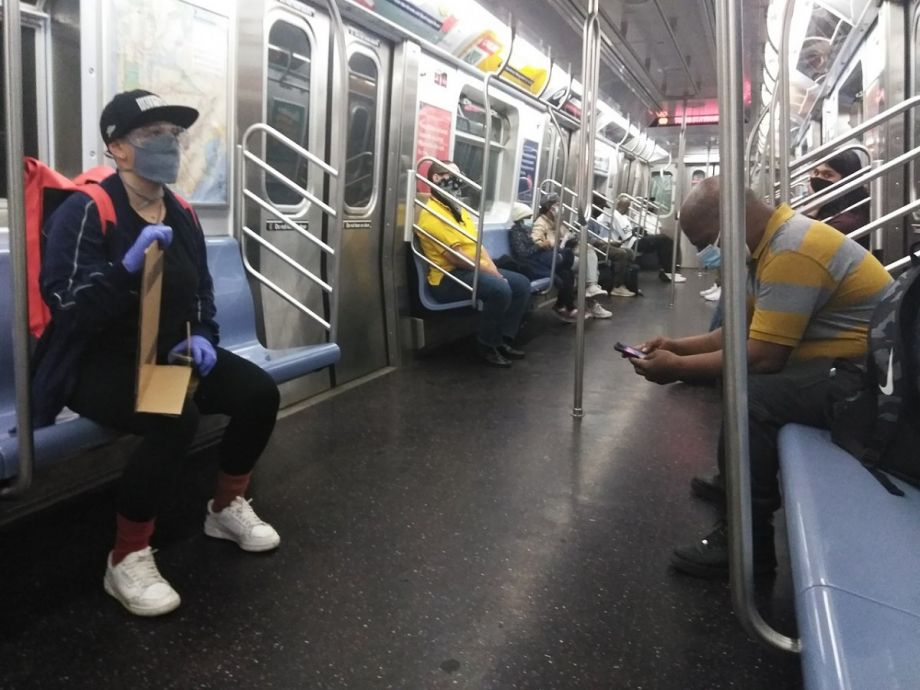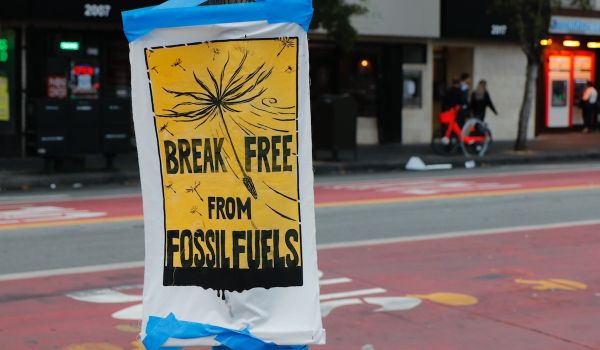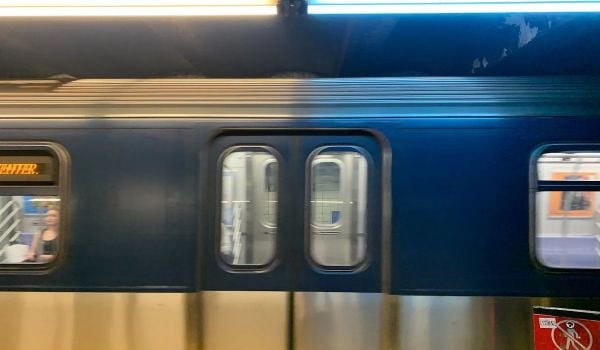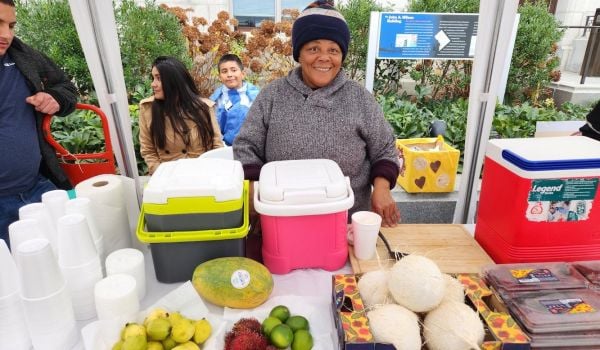Welcome to “The Mobile City,” our weekly roundup of new and newsworthy transportation developments.
The debate over transportation equity has heated up, given the sharp change in transit-rider demographics once the COVID-19 pandemic took most whiter and wealthier riders off of buses and (especially) trains. Not everyone sees eye-to-eye on just what transportation equity means. But a growing number of social-justice activists, urbanists and even transit-industry professionals now argue that making transit free for all should be one of the tools used to make transportation more equitable. Kansas City, Missouri, got the conversation started at the end of 2019 when its city council voted to make the city’s bus system fare-free. Now some of the nation’s biggest transit agencies are wondering whether to make mass transit free for everyone, or at least a lot cheaper to ride than it is now.
Meanwhile, some fresh thinking about how to reduce the carnage on roads is prompted by the “pandemic paradox,” whereby the death toll rose from collisions between vehicles and pedestrians, cyclists or other road users, even as the number of vehicle miles traveled dropped. One idea that’s caught on is to build safety into the road design — that is, instead of relying on laws and spot fixes to slow traffic, to design them from the start so that traffic moves more slowly. This approach, known as “Safe System,” is gaining adherents within the highway engineering community, even as the weight of history continues to exert force in the opposite direction.
Of course, cars operating on autopilot on roads that are designed to move them at high speeds pose a real danger to other road users, including those in other cars. Autonomous vehicles cannot recognize and react to objects in the road with complete accuracy; so in places where AVs are street-legal, a person must stay in the driver’s seat to take over in case of an emergency. A story from the birthplace of the driverless car shows that not everyone heeds that particular memo.
The Nation’s Biggest Transit Systems Contemplate a Fare-Free Future
The last time cities experimented with fare-free transit, in the 1970s and 1990s, the experiments proved short-lived, as problems with safety and security combined with higher maintenance costs made that strategy uneconomical.
This time around, it could be different. The COVID-19 pandemic revealed just how much lower-income and nonwhite riders depended on mass transit to get them to the essential jobs they couldn’t perform at home. Where ridership on subways and regional rails took significant hits once pandemic restrictions took effect, bus ridership in major cities fell far less. Many lower-income workers relied on buses to get them where they were going.
This, in turn, has led transportation equity advocates, elected officials and even transit agency managers to consider making reduced or free fares a permanent fixture as ridership recovers. In a graphically impressive interactive multimedia feature, The Washington Post took a deep dive on May 17 into how three of the nation’s largest transit agencies — New York’s Metropolitan Transportation Authority (MTA), the Washington Metropolitan Area Transportation Authority (WMATA), and Bay Area Rapid Transit (BART) — are wrestling with the idea of treating mass transit less as a fare-supported service and more as a utility that is as essential as a city’s roads, which are not, by and large, funded by direct user fees.
The Post feature includes audio testimony from riders about how the pandemic changed their experience of riding transit and the challenges they faced in paying for the rides. It notes that the experience of several systems (including D.C.’s) with going fare-less during the pandemic has made those agencies more willing to consider offering free fares to a larger segment of their riderships. Among the graphics are several charts that show the dramatic shift in the makeup of the ridership after the pandemic: in the San Francisco Bay Area, for instance, fully half of all BART riders in 2020 earned less than $50,000 per year; two years earlier, 40 percent of them took home $100,000 a year or more.
Robbie Makinen, head of the Kansas City Area Transportation Authority, points to other economic benefits of making transit fare-free. As he put it, the $2 or $2.50 the riders save gets invested elsewhere: “It’s going to buy a pair of shoes. It’s going to buy some groceries. It’s going to small businesses,” Makinen told the Post. “That dollar is going to turn over two or three more times and be worth a hell of a lot more than it was just [by] being in my fare box.”
Many in D.C. also think that fare-free transit makes sense now. The feature notes that a coalition of groups advocating “transit justice” wants the federal government to spend $60 billion a year on subsidizing transit service, something the Feds had not done until the pandemic hit. Critics believe the high cost is an obstacle to implementation, especially if the funds come from diverting highway spending to transit investment, as advocates would like to see happen. But Eno Center for Transportation President Robert Puentes told the Post that people are coming around to this new view of transit service:
“We’re looking at transit differently and not as a tool for mobility or primarily just moving people around,” Puentes said. “The purpose of transit is to connect people up to jobs and economic opportunity.”
Road Engineers Push to Make Roads Safer by Design
Historically, transportation engineers have relied on laws and traffic control devices as the principal means of getting drivers to slow down on city streets. But as those same streets became emptier during the pandemic, the limits of this philosophy became clear. Deaths from collisions between motor vehicles and non-car-driving road users have risen as drivers have driven less; the Governors Highway Safety Association forecast an eight percent rise in pedestrian deaths for 2020 even as vehicle miles traveled were falling by as much as 16 percent.
Smart Cities Dive reports that the solution to this problem is to design streets and roads so that cars have to travel more slowly on them from the outset. This approach, known as “Safe System,” has been endorsed in a report issued by the Bloomberg School of Public Health at Johns Hopkins University and the Institute of Traffic Engineers.
One example of a safe-system approach is to replace four-way stops and signalized intersections with roundabouts. These reduce the likelihood of crashes by forcing drivers to move through the intersection slowly instead of requiring them to take conscious action to avoid hitting another vehicle or a pedestrian.
According to the article, this, too, is a transportation equity issue — or it can be, depending on where you focus the investments in inherently safer roads. “If you prioritize implementation in areas that have been underserved and at risk, you close the gap in those communities and make everyone safer,” says one of the report’s co-authors, former National Highway Traffic Safety Administration official Jeffrey Michael.
The Federal Highway Administration is in the process of updating the Manual of Uniform Traffic Control Devices, the road engineer’s bible. This presents the opportunity to make safer streets a fundamental building block of American road design. But, as Smart Cities Dive also notes, inertia is a powerful force, and while the National Association of City Transportation Officials (NACTO) can be counted on to advocate for this new approach, not all highway engineers or state transportation departments are on board with it yet.
Backseat Non-Driver Gets Arrested, Then Repeats His Offense
Right now, it’s possible to buy a car that drives itself: the Tesla Model 3 offers an autopilot feature that allows the driver to sit back and relax while the car guides itself down the road. But state law in California requires the driver to remain behind the wheel whenever the autopilot is engaged, and with good reason. The autopilot isn’t foolproof, and the National Highway Traffic Safety Administration is investigating more than two dozen crashes involving Teslas running on autopilot.
But as we all should know, some people place an inordinate amount of faith in technology. The Capitol Hill newspaper The Hill has a story about one such zealot who says he will continue to act out his faith in autopilot tech, even as the authorities move to suppress it.
The zealot in question is Param Sharma, a 25-year-old Bay Area resident who was arrested May 10 after other drivers spotted him tooling across the San Francisco–Oakland Bay Bridge in the back seat of his Tesla — with no one driving up front. The California Highway Patrol charged him with two counts of reckless driving and disobeying a peace officer, impounded his car and hauled him to jail.
This wasn’t the first time that the CHiPs had caught him misbehaving, nor will it be his last. The patrol had cited him on April 27 for doing the same thing. And when Sharma showed up for an interview with KTVU on May 12, after his release from jail, he arrived in the back seat of a new Tesla, with no driver behind the wheel.
“I have unlimited money to blow on Teslas,” he said during the interview. “If you take away my Tesla, I will get another Tesla. That’s how it works.”
Tesla says that autopilot does not make the car fully autonomous, and so the functionality requires driver supervision.
This doesn’t faze Sharma one bit. He told KTVU that “I feel safer [in the back seat] than I do up there” and that he believes he could reach the steering wheel in time to avoid a collision.
Right now, Tesla is still testing a truly autonomous car, according to KTVU’s report. Its self-driving system has been involved in several fatal accidents.
Santa Clara County-based legal analyst Stephen Clark predicted that a judge would be unimpressed by either Sharma’s fabulous wealth or his hubris when he appears in court on June 6 to plead not guilty.
Know of a development that should be featured in this column? Send a Tweet with links to @MarketStEl using the hashtag #mobilecity.

Next City contributor Sandy Smith is the home and real estate editor at Philadelphia magazine. Over the years, his work has appeared in Hidden City Philadelphia, the Philadelphia Inquirer and other local and regional publications. His interest in cities stretches back to his youth in Kansas City, and his career in journalism and media relations extends back that far as well.
Follow Sandy .(JavaScript must be enabled to view this email address)







_600_350_80_s_c1.jpg)








